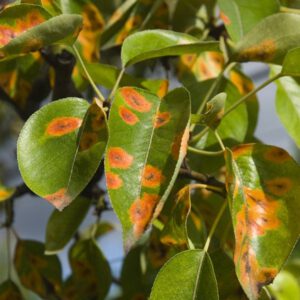How do you prevent diseases in young plants?
If you can stop diseases before they start, it will help protect your plants against fungi and other harmful agents. Prevention is especially important when controlling non-infectious disorders like nutrient deficiencies and winter damage, which are more severe in young plants.
The key to disease control is identifying the problem and understanding the biotic and abiotic factors that may be causing it. Once a diagnosis is made, the gardner can develop an effective management plan.
Proper Propagation
Proper propagation is a great way to keep your houseplants healthy and happy. It’s also a super-cheap and eco-friendly way to expand your plant family. And, you can even share the love by gifting your new baby plants to friends and family!
Propagation can be done in a variety of ways, but you’ll need a few basic supplies to get started. These include potting soil, a sharp knife or pair of clippers, and small starter pots.
The most common way to propagate plants is through cuttings, but you can also use leaves or a stem to make a new plant. This is an especially effective technique for succulents and snake plants, but you can also try it with other types of plants.
Using this method, you simply cut a small section of the leaf right below a root node. These nodes are little bumps where roots are starting to grow again, and they’re critical to getting a clone.
After cutting a piece of the leaf or stem, place it in room-temperature water. This will help the cutting callous over so it can be transferred to potting soil. You can also add a little bit of rooting hormone to the water to encourage root growth.
Another simple but effective way to propagate plants is through the process of layering. This is a process that occurs naturally in some plants, but you can help it along by bending or wounding a plant’s tip.
This will encourage the tip to grow downward first and then bend in a certain direction. The resulting curved tip will form a new plant when the tip is rooted in a rooting medium.
A number of different plants can be propagated this way, including bamboo, pothos, and Monstera (the Swiss cheese plant). You’ll need a clear container to monitor the progress of your cuttings and you’ll need to change the water regularly so it stays fresh.

Keeping Seedlings Clean
There are several ways to prevent diseases in young plants, but the most important one is keeping your seedlings clean. Whether you grow your own flowers, herbs, or vegetables, keeping the leaves and stems of your seedlings clean will help them look their best and be healthier.
You can easily clean houseplants with lukewarm water and a damp cloth, but if your plant can handle a stronger dose of water you can also spray it down with a solution of dish soap and water. Just be sure to rinse the leaves thoroughly so there isn’t any soap residue left on them.
Another way to keep your seedlings clean is to make sure they get enough light and heat. If you are growing seedlings under artificial lights, make sure to adjust them regularly to provide just enough light for your plants. Otherwise, seedlings will stretch toward the light source, which can weaken them and make them less healthy overall.
A good rule of thumb is that your plants need at least 15 hours of light per day, but they can’t receive more than that. In addition, it’s a good idea to rotate your seedlings regularly so they don’t overheat.
To get your seeds started on the right foot, soak them in a solution of hydrogen peroxide to speed up their germination process. Just a few minutes in a weak solution can do wonders for your seeds and will speed up the whole process of bringing them to life.
Seeds germinate fastest when they are kept at a temperature of 70-75 degrees F. This can be achieved by putting a heating pad under the seed tray or by warming the garden soil to that temperature before potting it up.
Using plastic humidity domes, which act like mini greenhouses, can help you keep the seedlings warm and moist as they germinate. Once they sprout, however, the domes should be removed and the seedlings transferred into fresh potting soil.
Another common problem with seedlings is damping off. This is caused by a fungus or mold that thrives in cool, wet conditions. Seedlings infected by damping off rarely survive to produce vigorous plants. The most common way to avoid this problem is to sterilize your plastic growing flats and trays before reusing them.
Keeping Soil Moisture Levels Right
Soil moisture level is one of the most important factors that affect plant health. It regulates the exchange of energy between the soil and the atmosphere, ensuring that plants have all the water they need to thrive.
Soil texture, soil organic content, stone content, activity of small burying animals and plant rooting depth and root density all contribute to how much water the soil can retain. A good understanding of these factors is essential to making the most of your soil and crop health.
A basic way to check soil moisture is to use a moisture meter. These devices use the principle of electrical resistance to measure moisture levels in soil. The higher the resistance, the more moist it is; a lower resistance indicates dry soil.
Moisture meters are simple to use and can be used in a wide range of different settings. They also offer additional features, such as reading light conditions and soil pH values.
To check soil moisture, simply insert the metal probe about four fifths of the way into the soil and read its readings. You can then decide if it is time to water your plants.
Once you know what the moisture level of your soil is, you can plan irrigation to keep it at a specific moisture level. Using preset ‘Management Lines,’ you can set your irrigation schedule to maintain root zone moisture at five different levels: Very Full, Full, Optimal, Refill and Stress (also known as the Permanent Wilting Point).
The goal is to keep Root Zone Summary measurements within one of these zones at all times. The area between the ‘Full’ and ‘Refill’ lines is called the ‘Optimal’ moisture zone, and represents the best possible soil moisture for your plants.
If your soil is at a moisture level above the ‘Refill’ line, it means that your plants are experiencing excess water and are at risk of suffering from diseases like Verticillium wilt. By avoiding exposing plants to this water, you can help to prevent disease in the future.
Keeping Seedlings Healthy
Keeping seedlings healthy is one of the best ways to prevent diseases in young plants. It is also a key step in successful plant propagation and cultivation.
Whether it is a disease caused by a fungus, a virus or bacteria, prevention is the best approach to controlling plant problems. This can be done through proper sanitation practices, destroying infected plant parts, avoiding overwatering and applying protectant fungicides before infection occurs.
Many foliar diseases, such as anthracnose and powdery mildew, are caused by bacterial infections. Bacteria are microscopic organisms that enter plants through wounds or stomata. They can cause leaf lesions and blight, or they can release a sticky ooze that splashes to healthy leaves in water droplets.
These bacterial oozes, called spores, are picked up by insects such as fungus gnats, and they can spread in splashing irrigation water from a diseased plant to other healthy plants. They may even travel through air currents as a result of handling infected plants or moving them.
Damping off is a common disease that affects many vegetables and flowers. It is most common in young seedlings. Often, large sections or entire trays of seedlings are killed. It is easily transferred from plant to plant by growing through the potting media or in shared irrigation water.
To prevent damping off, use sterilized pots and trays filled with new potting mix to avoid introducing the pathogens into the warm wet conditions necessary for germinating seeds. Overwatering, cool soil temperatures and high salts from over fertilizing are all conditions that increase the risk of damping off.
Another important aspect of preventing disease is choosing the right plant varieties, whether within the same species or different cultivars. It is well worth the effort to select plants with higher resistance to certain diseases, so you can save time and money in the long run.
A variety of plant societies have compiled lists of resistant cultivars. Ask your garden center or arboretum for these and other specialized publications that can help you determine the most suitable and disease-resistant plants to grow in your yard.



Recent Comments